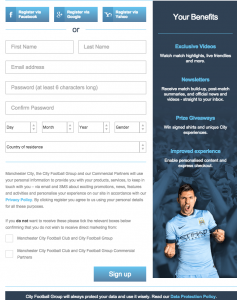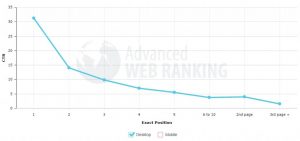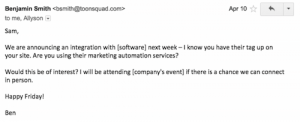With an omnichannel campaign focused on key metrics and an optimized bidding structure, RTB display can be a powerful tool in your advertising strategy.
With a history dating back 25 years, the banner display ad is not only the oldest digital advertising platform: it’s also the most valuable — albeit misunderstood. When leveraged correctly and applied within the context of the appropriate metrics, RTB display is a powerful tool that can fuel impactful and profitable digital campaigns through personalization, acting as a valuable supplement to all other platforms.
Metrics that matter
In life and digital marketing, it’s all about the journey – not the destination. When moving customers down the funnel, strategic advertisers know to focus on the metrics that truly matter, rather than merely generating clicks. Technology has evolved since the days of measuring click-through rates as an indicator of a display campaign’s effectiveness, rendering this line of thinking obsolete. Times have changed and it’s up to advertisers to pivot accordingly.
The fact of the matter is, click-through rates fail to take into account the full picture. The average person is served 1,700 banner ads per month, and only 8 percent of online users account for 85 percent of online clicks. In other words, if an advertiser is optimizing a campaign to clicks, he or she is only optimizing to that small minority group. View-through rates present a solution to this problem, painting a more comprehensive picture by giving credit where credit is due, attributing an action to an advertisement, no matter when the user visited the site. From there, advertisers can utilize cross-device attribution – tracking a user on their journey which may begin on one device and lead to conversion on another – by serving ads across multiple platforms and creating a seamless experience. By leveraging cross-device attribution, you can better understand the consumer journey and optimize to improve success.
All too often, advertisers make the mistake of disproportionately focusing on bottom funnel conversions – such as selling more or increasing the number of leads–at the expense of attending to top-funnel metrics. Beginning higher in the funnel is critical, as display is a full-funnel platform. Unlike video, search and native, display spans from awareness down to conversion and retention, making it the perfect supplement to the efforts of other platforms. By paying attention to the upstream metrics and focusing on personalization, advertisers can in turn, fuel and increase the number of downstream conversions.
When optimized to the appropriate metrics, personalizing the consumer experience by serving relevant, targeted RTB display ads fulfills three chief purposes:
- To engage audiences that have interest in the advertiser’s type of product or service
- To nurture and connect on a personal level to drive preference for the business
- To convert by strategically influencing consumers through their buyer’s journey
The result? Lower cost per acquisition, as well as higher return on ad spend and improved revenue.
Engaging
At the top of the funnel, engaging key audiences through strategic segmentation is the crucial first step in building a successful campaign, allowing the advertiser to find people with interest in purchasing his or her product. One major way for advertisers to achieve this is by observing website visitors – and more specifically, engaged visitors, who click around on different pages, showing interest in the product or services offered. These individuals form a basis on which advertisers can then identify audience targets that look like those engaged visitors. Through predictive modeling, location-based targeting and known audience suppression (removing data of past customers), advertisers can optimize to the goal of new customer acquisition. Further, audiences can then be strategically segmented based on subsequent actions that took place on the website to narrow down to the individuals with the highest intent to purchase.
This stage is where advertisers find the most efficiencies in driving quality audiences. By identifying the highest-quality audience within each segment, they can develop first-party data and arrive at the best possible cost per acquisition and return on ad spend. Also, this is where gaps are revealed in the workflow, allowing advertisers to troubleshoot the path to conversion. For instance, observing the rate in which people are moving through different segments might reveal drop-offs where many consumers abandon the page–suggesting that there is some kind of barrier to entry, whether it be too much personal information being asked or broken links. In this way, advertisers can determine precisely where adjustments are necessary to help improve campaign performance.
Nurturing
The next task is to nurture those engaged audiences by serving them highly relevant, personalized ads with the end goal of moving intent to action. This step is where retargeting can be layered in. Retargeting is a key factor in driving intent and moving towards conversion: website visitors who are retargeted with display ads are 70 percent more likely to convert. In addition, 91 percent of marketers who have used retargeting have found it to perform comparable to, or better than, search, email or other display ads – not to mention, three out of five online viewers notice and consider ads showing products that they viewed from another page.
To nurture engaged website visitors, advertisers can, for instance, retarget people with ads that are the same as, or similar to, the pages they originally viewed featuring products in the advertiser’s inventory. Utilizing personalized ad copy and creative based on where someone is at in the buying journey and how they have interacted with the website is critical to leveraging RTB display effectively.
Converting
Once customers have been successfully led through the journey from interest to action, the advertiser’s ultimate aim is to maximize those conversions by strategically optimizing the campaign based on efficiencies discovered in the bidding process. By dynamically maximizing budgets across digital campaigns, advertisers can not only drive conversions – but also lower the cost of conversions over time.
The bottom line: RTB display is a full-funnel product that integrates seamlessly into a larger digital advertising campaign, serving as an important supplement to efforts across other platforms. When layered into a highly personalized, omnichannel campaign that focuses on key metrics, and is optimized based on efficiencies discovered in the bidding structure, RTB display contributes to major improvements in overall campaign results and is a wise addition to any successful advertising strategy.
Opinions expressed in this article are those of the guest author and not necessarily Marketing Land. Staff authors are listed here.
Marketing Land – Internet Marketing News, Strategies & Tips
(67)
Report Post






